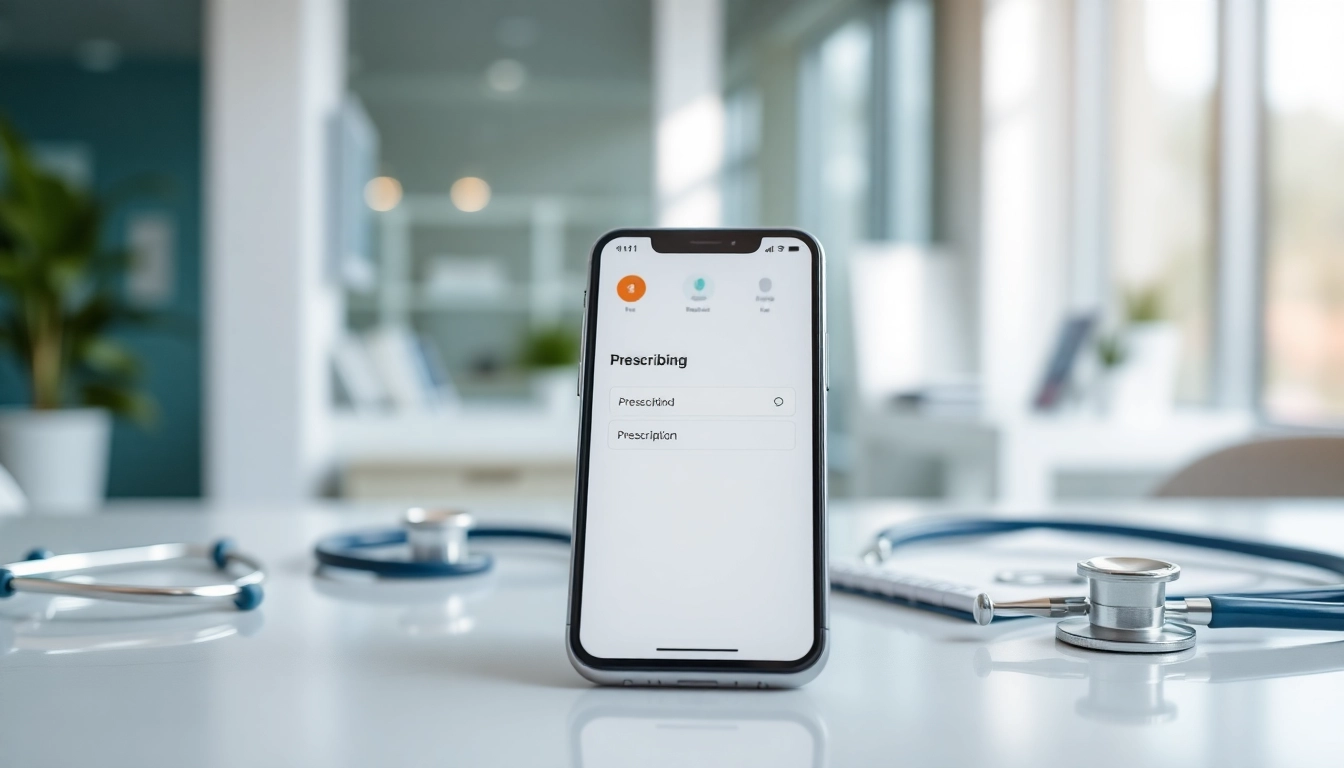Understanding Electronic Prescribing and Its Significance
Definition and Overview of Electronic Prescribing
Electronic prescribing, commonly known as e-prescribing, is a digital method that enables healthcare providers to create, send, and manage prescriptions electronically. This technology drastically simplifies the prescription process by ensuring that prescriptions are transmitted directly to pharmacies, minimizing the risk of errors typically associated with handwritten prescriptions. E-prescribing not only enhances the efficiency of the healthcare delivery system but also plays a pivotal role in patient safety and medication management. The benefits of electronic prescribing extend beyond mere convenience, impacting the overall quality of care patients receive.
Historical Context and Evolution of E-Prescribing
Electronic prescribing has its roots in the late 1990s and early 2000s, when the healthcare sector began adopting digital technologies to improve various aspects of patient care. The advent of standardized electronic health records (EHRs) set the stage for e-prescribing as part of comprehensive health management systems. Over the years, numerous regulations and advancements in technology, such as the Health Information Technology for Economic and Clinical Health (HITECH) Act, have encouraged wider adoption. As such, e-prescribing has evolved from optional systems to necessary tools for modern medical practice, aiming to streamline healthcare and improve patient outcomes.
Current Trends in Electronic Prescribing Adoption
The adoption of e-prescribing is at an all-time high, prompted by the increasing demand for integrated healthcare solutions that deliver patient-centered care. According to recent studies, over 90% of pharmacies in the United States can now accept e-prescriptions. Additionally, many healthcare providers are integrating e-prescribing functionality into their EHRs to enable seamless prescription management. Furthermore, as telemedicine continues to thrive, the need for digital prescribing solutions has become even more crucial, showcasing a trend toward greater efficiency, accuracy, and patient safety.
Streamlining Patient Care: Efficiency Benefits of Electronic Prescribing
Reduction of Prescription Errors through Automation
One of the standout benefits of electronic prescribing is its ability to dramatically reduce prescription errors. Handwritten prescriptions are often prone to misinterpretation due to illegible handwriting, abbreviations, or unclear dosing instructions. E-prescribing eliminates these risks by automating the prescription process and ensuring that information is accurately entered into the system. This not only improves safety but also enhances the overall efficiency of the prescription workflow, reducing the burden on pharmacists and healthcare providers alike.
Improved Prescription Management and Follow-Up
With traditional prescription methods, managing follow-ups and refills can be cumbersome, often leading to missed opportunities for medication optimization. E-prescribing systems provide healthcare providers with tools to easily track prescriptions, monitor patient adherence, and identify potential issues before they escalate. Enhanced prescription management creates an integrated approach to patient care, allowing providers to make data-informed decisions regarding medication adjustments and patient interactions.
Enhanced Communication between Providers and Pharmacies
Effective communication is a cornerstone of patient care. E-prescribing facilitates direct and instantaneous communication between healthcare providers and pharmacies, reducing the likelihood of miscommunication. This streamlined interaction enables pharmacies to access prescription details in real-time, aiding in quicker dispensing and improved customer service. By minimizing delays in medication availability, e-prescribing improves the patient experience and fosters better health outcomes.
Safety Enhancements Linked to Benefits of Electronic Prescribing
Real-Time Access to Patient Medication History
Access to a patient’s complete medication history is vital in preventing adverse drug events. E-prescribing systems integrate with electronic health records, allowing providers to view a patient’s medications at the point of care. This capability ensures that prescriptions are tailored to the individual needs of the patient, considering existing medications and potential interactions. By leveraging real-time data, providers can make informed prescribing decisions that enhance patient safety.
Alerts for Drug Interactions and Allergies
Modern e-prescribing systems come equipped with advanced clinical decision support features, including alerts for potential drug interactions and allergies. When a provider inputs a new prescription, the system cross-references it against the patient’s existing medication profile, instantly notifying the provider of any contraindications. These proactive measures help reduce the chances of adverse drug reactions, contributing significantly to overall patient safety and satisfaction.
Enhanced Patient Safety Protocols
Beyond alert mechanisms, the benefits of electronic prescribing extend to broader patient safety protocols. These systems often include features such as dosing calculators and therapy guidelines that assist providers in selecting appropriate medications and dosing regimens. Furthermore, the ability to electronically renew prescriptions enhances continuity of care, ensuring patients maintain their medication regimen without interruption, which is essential for chronic disease management.
Cost-Efficiency and Financial Impact of E-Prescribing
Reducing Administrative Costs for Healthcare Providers
The administrative burden associated with prescription management can be significant for healthcare providers, often leading to increased operational costs. E-prescribing streamlines these administrative tasks, allowing providers to process prescriptions quickly and efficiently. This reduction in paperwork not only saves time but also allows healthcare staff to focus on more value-added activities, ultimately improving practice productivity and reducing unnecessary overhead.
Minimizing Healthcare Costs for Patients
For patients, e-prescribing can lead to lower healthcare costs. By automating the prescription process, e-prescribing reduces the likelihood of errors that can result in costly medication management issues or hospital readmissions. Additionally, many e-prescribing systems incorporate cost-comparison features, allowing providers to select effective medications that fit within a patient’s budget. This transparency fosters informed decision-making and can lead to substantial savings for patients over time.
Long-Term Financial Sustainability for Healthcare Systems
As healthcare continues to move towards value-based care models, the cost-efficiency associated with electronic prescribing becomes increasingly important. By minimizing errors, enhancing patient safety, and improving operational efficiency, e-prescribing supports the financial health of healthcare organizations. This long-term sustainability benefits all stakeholders involved—from patients to healthcare providers—and contributes to a more efficient and effective healthcare system overall.
Overcoming Challenges in the Transition to Electronic Prescribing
Common Barriers to Implementing E-Prescribing
Despite its numerous advantages, the transition to electronic prescribing is not without challenges. Common barriers include financial constraints, resistance to change among healthcare staff, and concerns regarding the reliability of technology. Smaller practices may struggle with the cost of implementation and ongoing maintenance of e-prescribing systems, while some healthcare providers may feel apprehensive about moving away from familiar processes. Addressing these concerns is vital for successful adoption.
Best Practices for Successful Implementation
For healthcare organizations to successfully implement e-prescribing, a strategic approach is essential. Best practices include selecting a user-friendly e-prescribing system that integrates seamlessly with existing EHRs, providing comprehensive training for staff, and establishing clear protocols for the use of the system. Involving stakeholders throughout the implementation process ensures buy-in and helps mitigate resistance to change.
Measuring the Success of E-Prescribing Initiatives
To fully realize the benefits of electronic prescribing, healthcare organizations must establish metrics for evaluating the success of these initiatives. Key performance indicators (KPIs) may include reductions in prescription errors, improvement in patient satisfaction scores, and enhanced operational efficiency measures. Regularly assessing these outcomes not only reinforces the value of e-prescribing but also identifies opportunities for further enhancements within the system.



